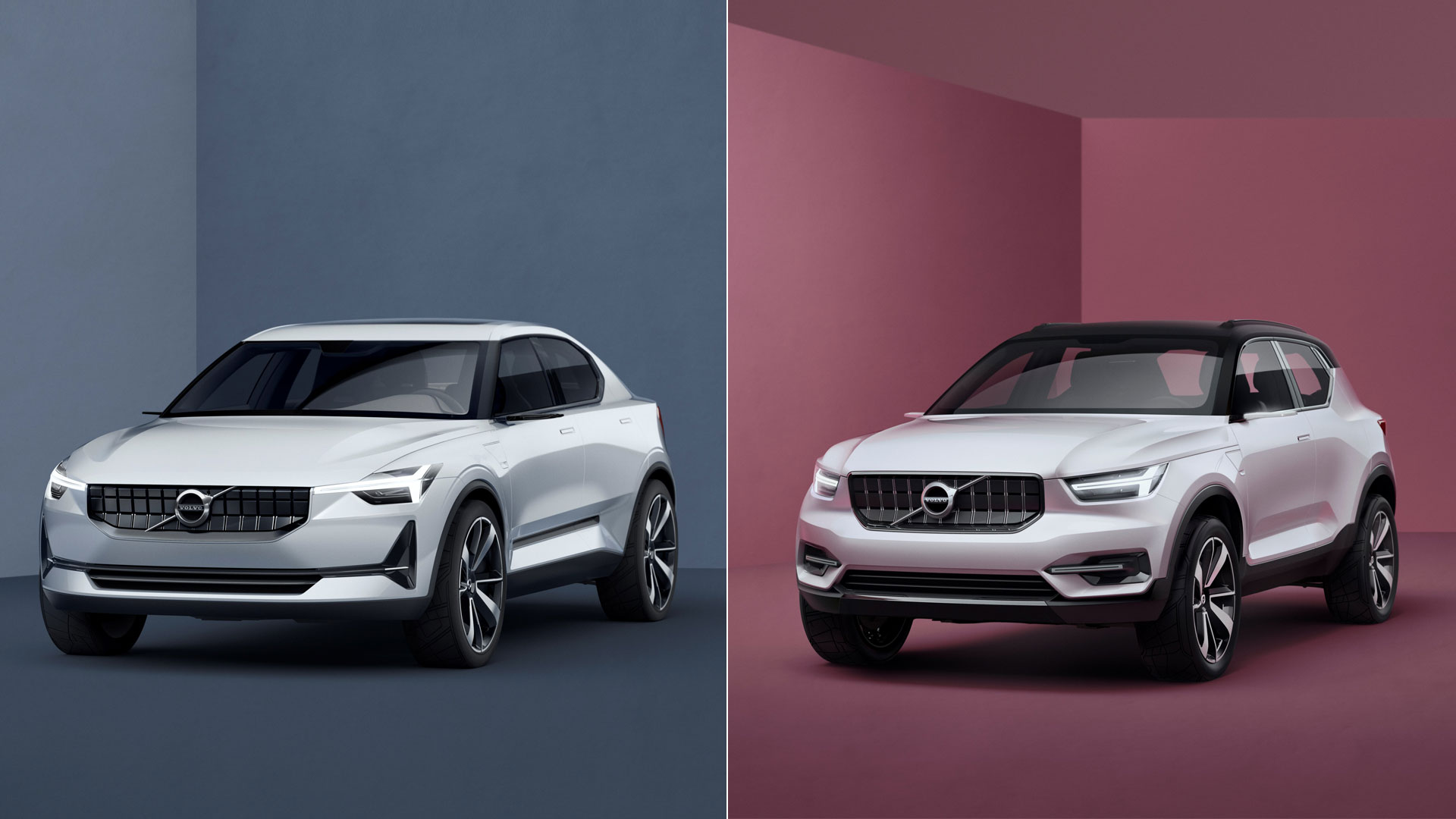

Volvo’s pipeline of cars slowed to a drip a few years ago – Americans couldn’t even get a wagon – but it’s gushing again. The latest deluge comes in the form of the Concept 40.1 and 40.2, a compact sedan and crossover SUV that will inspire a showroom S40 and XC40 beginning in 2017.
Unveiled at Volvo’s Design Center in Gothenburg, Sweden, the dual concepts will also spawn EV and plug-in variants, linchpins of Volvo’s pledge to sell 1 million electrified cars around the globe by 2025. The hybrid will combine Volvo’s new, 1.5-liter, three-cylinder turbo T5 Twin Engine with an electric motor to deliver roughly 247 horsepower and 295 pound-feet of torque. To satisfy Volvo’s safety standards, a rectangular, 9.7 kWh lithium-ion battery will tuck along the car’s center tunnel, protecting it from impacts without impinging upon trunk space. Plug-in hybrids are expected to deliver about 30 miles of all-electric operation.
Conventional three- and four-cylinder gasoline versions are also in the works, with power for all models mediated through Volvo’s new, seven-speed dual-clutch automatic transmission.

For Volvo, these cars can’t get here soon enough. Volvo’s lineup is bereft of the small, relatively affordable and higher-mileage cars that can recruit buyers to a brand. The old S40 sedan and V50 wagon were discontinued in American in 2011. The quirky C30 hatchback bit the dust the following year. Volvo definitely has a jealous eye on Audi, BMW, Mercedes and other luxury brands that are making hay on premium small cars.
“The new 40 series cars have the potential to improve our market penetration in an important growing segment,” said Håkan Samuelsson, Volvo president and chief executive. “An electric powertrain program including both a new compact Twin Engine plug-in hybrid as well as a pure electric car are central to the CMA architecture.”
That new CMA layout, for “Compact Modular Architecture,” will underpin a range of strictly front-wheel-drive Volvos.

Frosty white and softly molded, the handsome concepts appear to need little production tweaking to meet with approval from Volvo dealers, customers or regulators.
“They have an energy, a disruptive and engaging urban character that makes them stand out amongst the crowd. This is the flavour of small Volvos to come,” said Thomas Ingenlath, Senior Vice President, Design, at Volvo Car Group.
The reliable whine of journalists accompanied the crossover’s reveal: “Why isn’t it a wagon?” The answer is that Americans would rather take the bus than a conventional wagon – at least they’d be sitting up high.

Both the 40.1 and 40.2 feature the “Thor’s hammer” headlamps that strike a visual blow in the XC90 SUV, with equally impactful LED taillamps. The sedan’s cabin is drawn well to the rear, with flush-mounted door handles and clever air intakes whose shape suggests a periscope, or perhaps a designer shower head. The tall-riding crossover, for its part, instantly recalls a Land Rover Evoque – including a contrasting black roof – but filtered through a Swedish sensibility. Attenuated exterior mirrors, striped with decorative LED’s, appear to house cameras rather than conventional glass, though that design element won’t pass muster with regulators for now.

On the larger side, Volvo’s award-hogging XC90 SUV has helped the company boost global sales by 11.9 percent through the first quarter this year. Volvo has set a goal to boost worldwide sales to 800,000 in coming years, up from 503,000 in 2015. Add small sedans, crossovers and their electrified offshoots, and Volvo’s sales goals – as opposed to the delusional likes of Volkswagen or Alfa Romeo – seem eminently achievable.